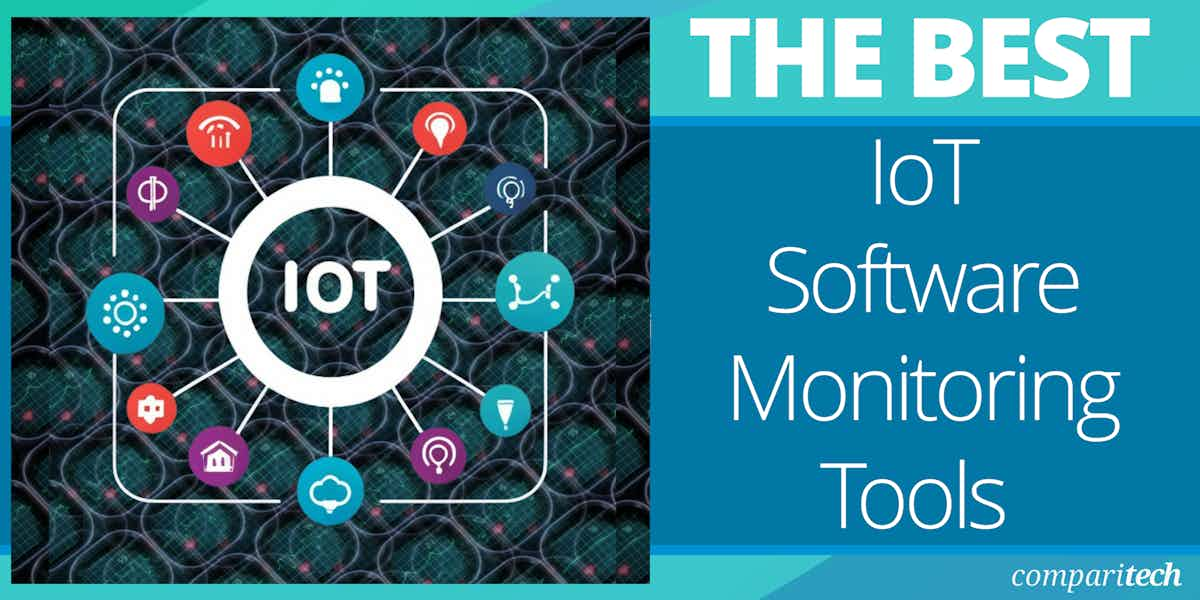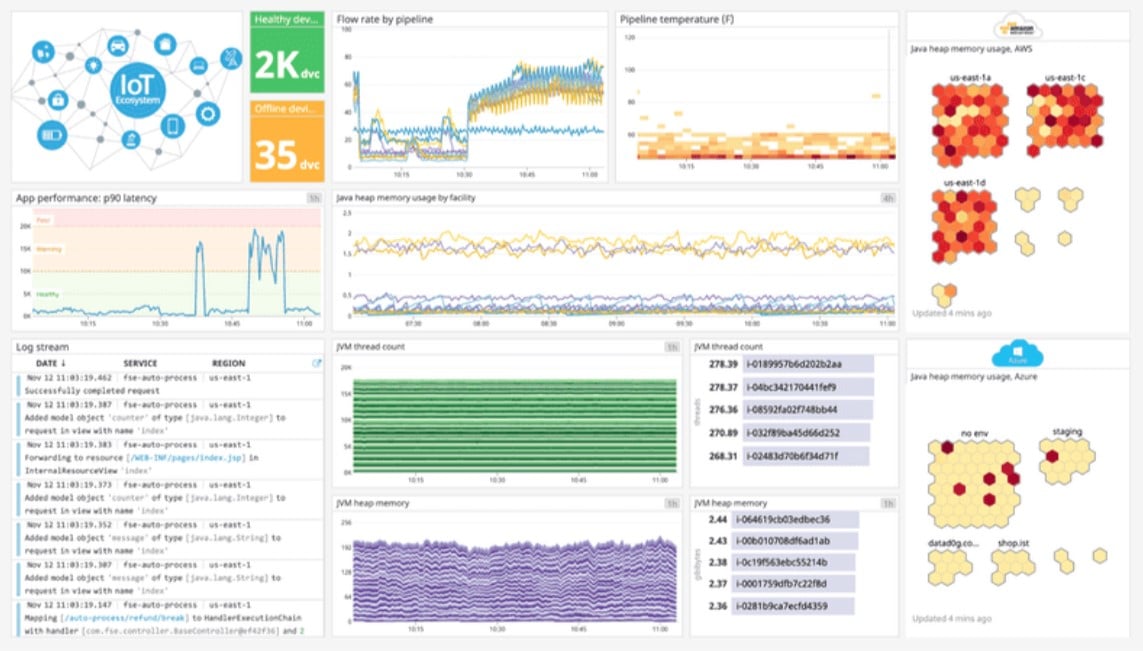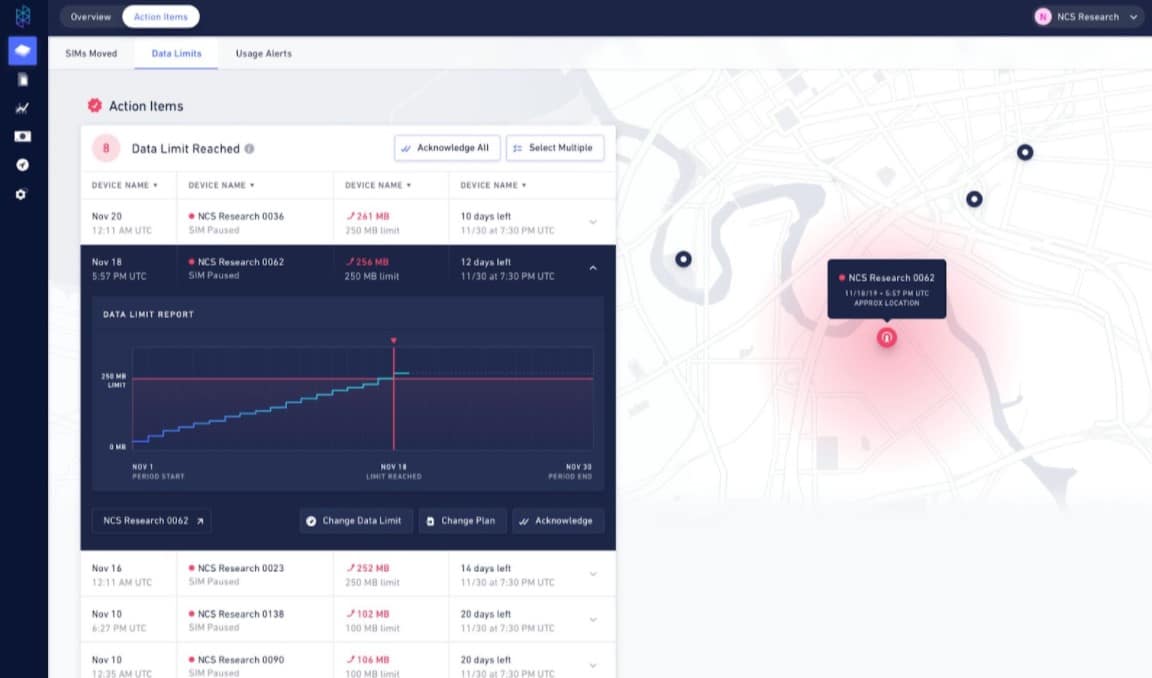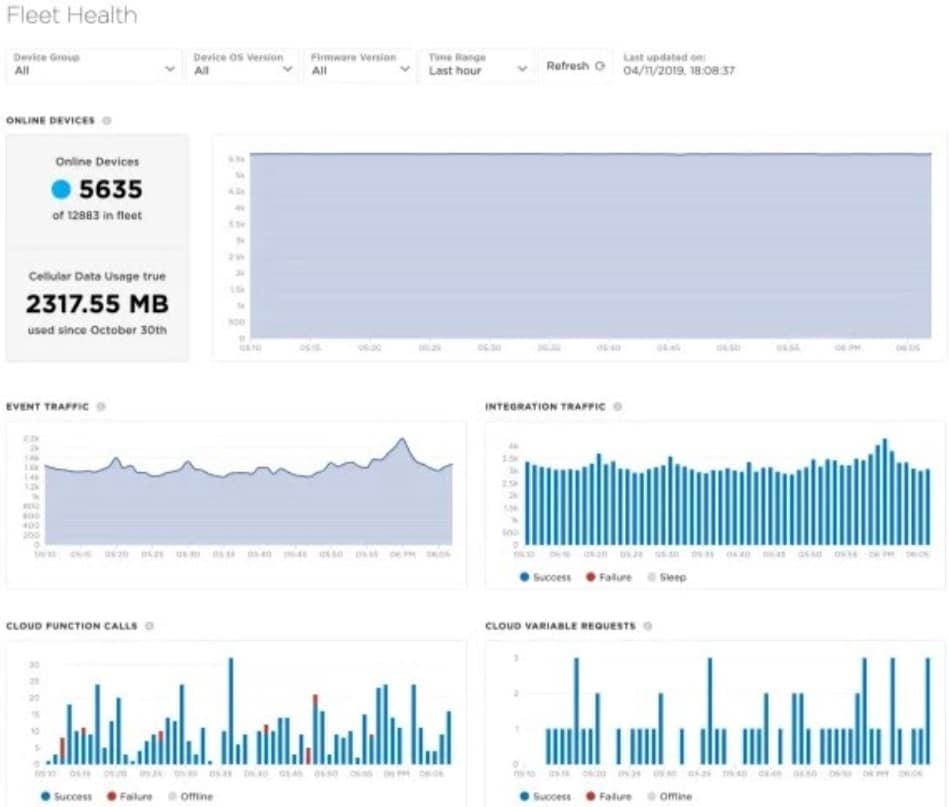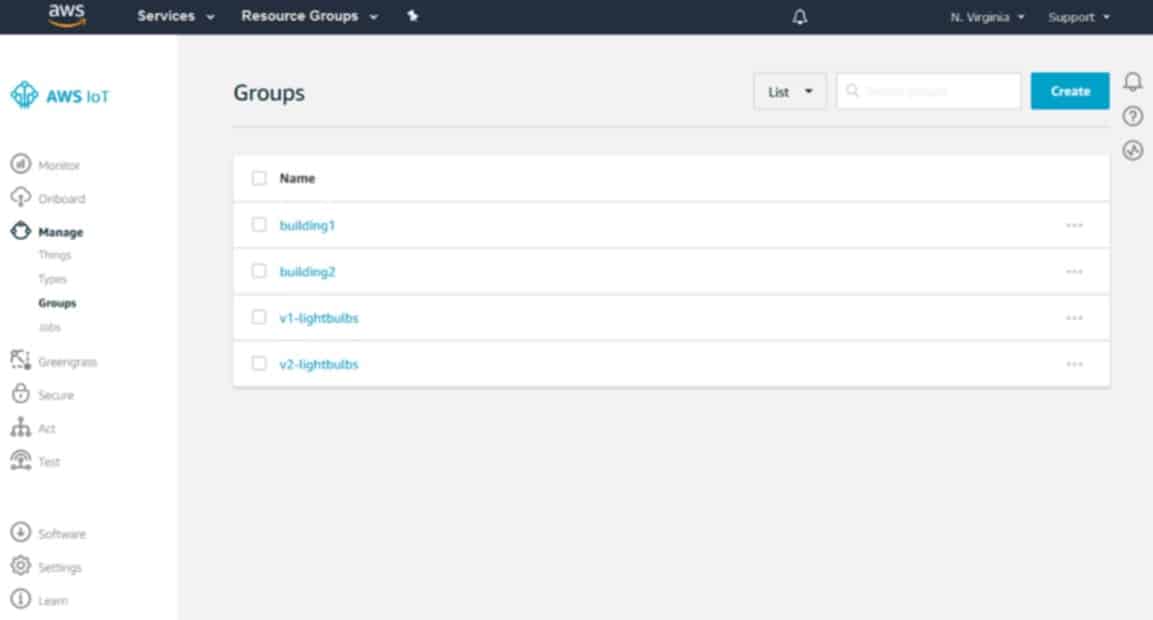Harness your IoT data and monitor countless device types using these eight monitoring solutions.
Here is our list of the best tools for IoT software monitoring:
- Skyspark A scalable IoT monitoring system supports a wide range of IoT devices. Skyspark can work with any Java-capable device, making it suitable for every use case.
- Senseye PdM If you need to specialize in IoT-driven production, an industrial IoT monitoring and management suite created exclusively for factory-floor equipment is the best in the business.
- Datadog IoT Monitoring Another specialized industrial IoT monitoring and management platform with mapping and location-based data aggregation was created exclusively for the transportation and logistics industries.
- Teamviewer IOT A customizable IoT solution provides a comprehensive monitoring and alerting system backed up by a wide range of integrative IoT solutions.
- Hologram IoT A platform for cellular IoT monitoring. Hologram lacks the versatility of other solutions, but this is the best alternative for you to track cellular consumption data on IoT devices.
- OpenRemote This is the only entirely free and open-source solution on the list. So if you have the necessary development skills and a tiny budget, OpenRemote will surely meet your requirements.
- Particle A software and hardware package based on cellular development boards, similar to an Arduino starter kit. For whatever business size, Particle has a very flexible data plan scheme.
- AWS IoT Device Management AWS platform extension that is optional. While this solution doesn’t come with much monitoring out of the box, it might be the best option if you already use the AWS platform and need to integrate and deploy some IoT devices.
IoT (Internet of Things) is becoming a standard solution to the problem of remote device control and management in a variety of businesses. Therefore, it makes sense for more and more gadgets to be connected to our existing systems, given that network integration is critical for organizations that need to keep up with expanding technological demands
IoT software monitoring technologies help bridge the gap between usually opaque equipment like transportation, power, cooling, or manufacturing gear. They are critically necessary to delve into the specifics of such equipment, revealing critical information such as temperature, location, and even malfunctioning components.
There are eight individual solutions featured within this list that can be loosely considered either Specialized solutions that are designed to handle one branch of IoT (such as cellular or manufacturing), or there are several options that could be regarded as General solutions that can handle a wide variety of IoT platforms.
The Best Tools for IoT Software Monitoring
1. Skyspark
Skyspark is a simple IoT monitoring tool that lets you track a wide range of devices. Rather than focusing on industrial or logistics, the focus is on enabling you to monitor a broad spectrum of data on standard IoT devices. Skyspark is appropriate for small, medium, and even large-scale organizations because of its ability to span a pervasive range of data by organizing devices into nodes.
Key Features:
- IoT monitoring FOLIO database
- Data filtering and tagging
- Substantial reporting/data exporting tools
- Modular apps for additional features
- Customizable dashboard
Additional capabilities, such as checking resource demand, including power and water consumption, can be added via independent apps. You can generate reports on any subset of monitored data or export it as a CSV or PDF file outside of the application. Skyspark is perfect if you’re working with a broad range of IoT devices and need to monitor them concurrently.
Skyspark is a Java application that can operate on any platform to execute Java applications. A license can be purchased directly from Skyfoundry or through its partners. Do, however, note there is no free trial available, and the basic license costs roughly $60 for a one-time purchase.
2. Senseye PdM
Senseye PdM (now part of Siemens) is an industrial Internet of Things (IoT) monitoring solution tailored to factory equipment. By providing an overview of equipment conditions and using predictive algorithms to avoid unexpected downtime on IoT-connected shop floor equipment, the focus is on reducing maintenance and downtime.
Key Features:
- Factory floor equipment monitoring
- Predictive maintenance
- Central monitoring dashboard
- Broad catalog of compatible machinery
- Substantial reporting tools
This business solution is only helpful for companies that use many networked robots, such as those in the automotive industry. However, if you require a software monitoring solution for your manufacturing floor, it is one of the best alternatives for handling a wide range of IoT equipment.
The utilities in Senseye PdM Complete are extensive. However, you can still choose from various packages, such as Senseye PdM Enterprise and Senseye PdM Omniverse, to fine-tune the features you need and build on the base product’s capabilities. You can also contact Senseye directly to schedule a demo and receive a customized price quote.
3. Datadog IoT Monitoring
Datadog IoT Monitoring is an enterprise-level industrial solution that can monitor many data sources worldwide while consolidating performance and maintenance data into a single location. The program is designed to collect IoT fleet data in the transportation and logistics industries.
Key Features:
- Distributed IoT monitoring for transportation and logistics
- Aggregate data through tags
- Monitor performance through a central dashboard
- Anomaly detection alerts
- Device health reports
The program may create location heatmaps from telemetry data and allow a user to annotate their IoT transportation routes for better feedback and aggregation. While the program is outstanding, it is only suitable for sufficiently large-scale organizations focused on logistics network management.
The software is offered for a free 14-day trial, but you’ll need to contact the company directly for a specific quote on full license pricing. The software agent supports more than 450 IoT technologies, and the solution may be managed and watched from anywhere on or outside your network.
4. Teamviewer IOT
You’re undoubtedly familiar with Teamviewer for their remote access software, but they also have a Teamviewer IoT industrial IoT monitoring package. The program was created from the bottom up with large-scale industries in mind, such as manufacturing and logistics, and it can handle a wide range of industrial fields. So, while Datadog focuses on transportation and Senseye on manufacturing, Teamviewer IoT can handle both simultaneously and more.
Key Features:
- Broad range of industrial purposes
- Customizable dashboard
- Monitoring alarms
- Widely integrated
- Completely free on just two endpoints
The system can connect to many IoT devices and interface with ITSM software like Salesforce. The client may need to monitor and report a customized collection of data and set up alarms for issues flagged as unusual.
The Free IoT Journey offer allows you to install Teamviewer IoT on two endpoints for free. This will enable you to try out the software before committing; alternatively, if you’re looking for a small personal IoT solution for a couple of devices – perhaps at home or at a small business – this can be worth checking into. Zendesk, Amazon Workspaces, and IBM Maximo, to name a few, are among the many integrative solutions offered by the platform.
You’ll need to contact the sales team directly for a customized quote on a price beyond the two accessible endpoints.
5. Hologram IoT
Hologram offers a cellular IoT solution that provides simple monitoring data for every linked cellular IoT device. SIM cards are used in cellular IoT to connect to a central host via 4G, where they may be monitored and managed remotely; Hologram is ideally suited for usage in the transportation and logistics industry, as well as any other industry in which several IoT devices are dispersed over long distances.
Key Features:
- Cellular IoT monitoring
- Check data limits and costs
- Data usage alerting
- Lots of supported technologies
- REST API integration
The monitoring functions of Hologram are focused on the cellular side of things, such as tracking data usage and activation times. Of course, this solution isn’t for everyone, but if you’re using a cellular IoT network specifically, Hologram might be the ideal option.
Pricing for Hologram is handled like a typical flexible mobile contract, with separate costs for the data plan and SIM cards. The standard SIM card costs $5 individually or purchased in several bulk options that significantly reduce the price, such as 100x SIM cards for $400.
The data plan options are entirely scalable to a specific number of devices, but it costs $1.50 per month for an individual data plan, with additional costs per MB of data. The price decreases as more devices are added to the data plan.
6. OpenRemote
OpenRemote is an industrial IoT platform that is entirely free and open-source. Users can construct a fully customized dashboard with valuable monitoring data. Various systems have been created to enhance the platform’s core capabilities. In addition, it can be further altered and developed to meet your requirements.
Key Features:
- Open-source and free
- Widely integrated with development
- Data visualization dashboard
- Task automation
- Mobile application available
This is the best alternative if you have the time and ability to construct your backend. It’s also the ideal option if you’re on a tight budget, as it’s the only solution on this list that’s completely free.
The OpenRemote controller can be downloaded for free from this link. However, because the platform is written in Java, you’ll need a thorough understanding of the language if you want to customize or develop it.
7. Particle
Particle is a cellular IoT solution that delivers a lot more information in terms of reporting and monitoring. The trade-off is that Particle also requires Particle-branded gear, which they sell separately, to be directly integrated into your IoT devices.
Key Features:
- Hardware development with manual integration
- Cellular IoT options
- Customizable dashboard
- Inbuilt API
- Cloud platform integration
The breadth of monitoring accessible to you is endless if you can set up the hardware and manually integrate your IoT devices. Even so, you’re performing a lot of the grunt work yourself. A configurable dashboard is used to view the data. Because the kit is self-installed, the technology’s potential applications are endless, spanning all industries where IoT devices are used.
Using Particle hardware is similar to using an Arduino, except that it comes with a whole software suite to go along with it. The main distinction is that you may remotely send updates to your devices via the Particle website over the cellular network. This may be the best alternative for you if you or your company are accustomed to creating with Arduino or comparable kits.
Particle pricing is split between paying for the hardware and the data plan, similar to Hologram (including the management console). Because you’re buying the development board and the SIM together, they have a lot of hardware possibilities. For example, the Particle Boron, which costs $60 per unit and includes a SIM, is a typical SIM-included development board.
8. AWS IoT Device Management
The IoT Device Management package is one of AWS’ many extensions, which, as you might expect, effortlessly integrates into an existing AWS setup with relatively simple installation and maintenance. However, in terms of monitoring features, AWS IoT is one of the most barebones alternatives on this list, offering minimal options for numerous IoT device kinds.
Key Features:
- Device management and organization
- Bulk task execution
- Barebones monitoring
- Modular features and pricing
- Quick and easy installation
The system’s primary purpose is to manage and execute tasks across an AWS-integrated IoT network. This service doesn’t offer much in the way of aggregate data monitoring or reporting, but it could be the best option if you currently use AWS and only require basic management capabilities for your IoT devices.
You’ll be using AWS for the IoT Device Management extension. The solution is priced in modules based on the functions you require. For example, the Bulk Registration tool costs $0.10 per device (per 1,000 devices). Most of the other capabilities are focused on managing your IoT network rather than monitoring, so you may discover that you don’t need them all if your primary goal is device monitoring.

